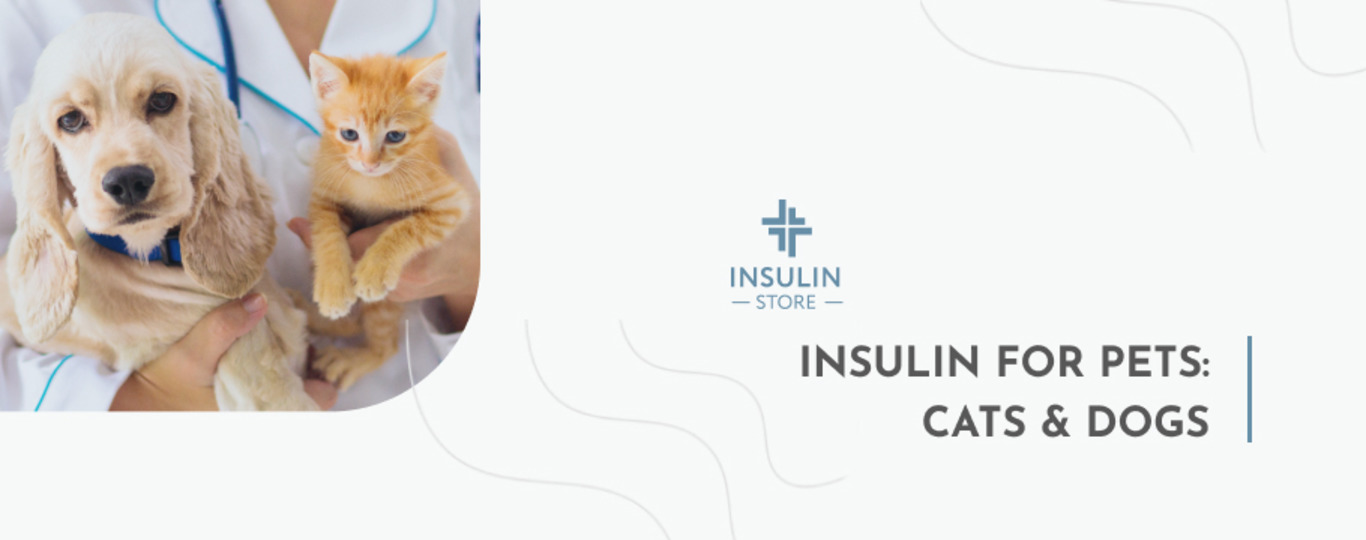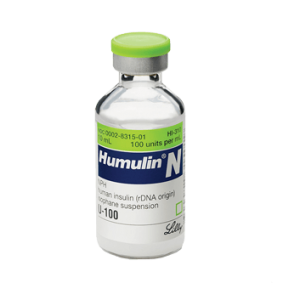
Insulin for Pets: Cats & Dogs
Have you got a pet? If you do, then you can understand my feelings. Dogs, cats, and other animals often become something more to us than just pets. We love them, get attached to these lovely creatures, and make them one of our family members. And it hurts so badly to get to know your pet is sick.
Diabetes Mellitus is one of the most widespread diseases in the world, affecting millions of people worldwide. Unfortunately, humans are not the only ones who suffer from it. However, while we can see something is going wrong with our organism, read information online, and go to a doctor to check our health, our dogs and cats cannot complain when they feel bad. So, it’s the responsibility of the owners to monitor the health of their animals.
So, in this article, I have gathered merely everything you may need to know about causes, symptoms, diagnosis, treatment, diet, and lifestyle changes for your pet if it has been diagnosed with diabetes. The important thing to remember is that people and animals can live a long and happy life even with diabetes if you learn how to monitor blood glucose levels!
What Are the Reasons for Diabetes Mellitus in Pets?
Just like in humans, pets with diabetes may not be able to produce enough insulin, or they may not be able to use insulin properly. Insulin is produced by the pancreas and allows blood glucose to enter the cells, which allows the body to function fully. Like humans, pets can suffer from both types 1 and 2 diabetes.
What Type of Diabetes is Common among Dogs & Cats?
Diabetes can be classified as type 1 – lack of insulin secretion or type 2 – impaired insulin production along with an inadequate response to the hormone.
The most common form of the disease in dogs is type 1, insulin-dependent diabetes mellitus. It occurs when the pancreas is unable to produce adequate insulin levels. For the treatment of this type of diabetes mellitus, the pet is very likely to be prescribed insulin therapy.
Type 2 diabetes is more commonly diagnosed in cats and is a lack of a normal response to insulin. As a rule, it occurs as a result of unbalanced nutrition, sedentary lifestyle, bad habits, so pets develop it much less often than people.
What Are the Symptoms of Diabetes in Pets?
The symptoms of diabetes and the complications of this disease are also similar to those of humans.
The following symptoms may indicate that your pet is suffering from diabetes:
- Change in appetite
- Excessive thirst/increased water intake
- Weight loss, often despite increased appetite
- Increased urination
- Unusual breathing with a chemical odor (acetone odor)
- Lethargy
- Dehydration
- Urinary tract infections
- Vomit
- Cataract formation, blindness
- Chronic skin infections
What Will Happen if You don’t Treat Diabetes in your Pet?
Diabetes itself would not be that dangerous if it did not provoke further complications with other internal systems and organs: cardiovascular, nervous, vision, liver, limbs, etc. Left untreated, the disease can cause many complex health problems for the animal. Complications of diabetes can be frustrating. These include the formation of cataracts and loss of vision, damage to the blood vessels, liver, kidneys, urinary tract infections, etc.
Treatment of Diabetes Mellitus in Cats and Dogs
The effective treatment of diabetes in your pet will consist of insulin injections, a special diet, and physical activity.
Together with your veterinary professional, you will choose the insulin type, appropriate dosage, and special diet for your diabetic dog or cat. The doctor will also teach you the correct insulin administration technique either with insulin syringes or injection pens.
Types of Insulin for Dogs & Cats
If your cat or dog has been diagnosed with diabetes mellitus, its and your lives have been changed forever. From now on, a great part of the daily routine will be dedicated to monitoring the glucose curve and helping your pet stay well and healthy.
It is very likely, especially in the case of diabetes type 1, that the doctor will prescribe your animal some insulin treatment to help decrease cat or dog’s glucose levels once it gets too high. Insulin of any type is a prescription-only medication, and you need to visit an animal doctor first if you want to buy insulin drugs at offline and online pharmacies. You cannot choose the type or brand of insulin on your own, as everything depends on the needs of your pet’s organism. However, the doctor may offer you a few options of short-, intermediate, or long-acting insulin, corresponding dosage regimes, and diet, of course, that will be the most comfortable for you and your pet. I have prepared a short overview of 3 of the most popular insulin brands.
Lantus Insulin for Cats and other Pets
Lantus is long-acting insulin based on the insulin glargine. Long-lasting means that its effectiveness for glycemic control is preserved for up to 24 hours. It means you have to administer Lantus just once in the day. It is very effective for the proper management of diabetes in human beings and is also very effective for diabetic dogs and cats. This medication is available in 2 forms: vial and insulin pen.
Humulin R Insulin Injections
Humulin R is very similar to the natural insulin hormone produced by the pancreas. It is a fast- and short-acting type of insulin. Its action begins approximately 20-30 minutes after the injection and lasts for 4 hours. It is useful when you need to lower the blood sugar in your pet as soon as possible. However, you will have to perform insulin injection with Humulin R 2-3 times a day, depending on the frequency of your cat or dog’s meals.
Humulin N Insulin Syringes for Blood Control in Pets
Humulin N possesses a longer onset and duration of action compared to Humulin R and belongs to the category of intermediate-acting insulins. This is one of the most frequently used types of insulin for diabetic control, being effective for approximately 12 hours. This is very comfortable as you can administer insulin just twice a day, in the morning and in the evening.
How Do I Give Insulin Injections to my Pet?
The process of injecting is not very pleasant to anybody, even when you understand this is important and useful for your health. But it gets even harder when we talk about animals whom you cannot explain their lives depending on this injection. So, here are a few tips on how to make the process faster and easier for you and your pet:
- always inject insulin approximately at the same time before or during the meal, strictly following all doctor’s recommendations
- have somebody hold your pet while insulin administration, especially if your pet is big
- catch the skin where you want to administer insulin, pull it, and quickly insert the fine needle, pushing the syringe plunger
- immediately withdraw the syringe out the animal’s body
- if you feel you administered insulin wrong or didn’t inject the whole insulin dose, do not do the follow-up injection, just follow the usual regime and dosage
- constantly switch the injection sites in order to avoid the development of allergic reactions or other unpleasant consequences
- do not forget to praise and palm your dog or cat every time, because it has to suffer from pain every day
The doctor will teach you the insulin administration technique, so be very careful and attentive as your pet’s health and life depend on it.
Tips for the Owners of Pets with Diabetes
If you want your pet to be happy and healthy and live with your family as long as possible, you should take your dog or cat’s diabetes really seriously, inject the hormone on time, do not allow your pet to overeat or eat unhealthy food, regularly monitor the blood sugar, etc. Here are some advice and tips for the diabetic pet owner:
- Unopen insulin should be kept refrigerated, open – at the room temperature
- Do not use insulin after the expiration date
- Monitor your pet’s level of glucose
- Take care of its food and diet
- Make sure the pet is active
- Always inform the vet about any dietary change, new medications, or food supplements. They may affect the need for insulin
- Remember, pets with diabetes can be treated with good results!
Ensuring Blood Sugar Control
In order to provide your pet with a long and comfortable life, you must strictly follow all the instructions of your veterinarian, observe the dosage of prescribed drugs and monitor the diet of your animal.
Observation by a veterinarian – control over:
- stable weight
- regular urination and thirst
- sufficient periods of activity (physical activity)
- blood glucose control
Healthy and balanced diet for diabetic pets
When diagnosed with diabetes type 1 or 2, your dog or cat will be prescribed ready-made dietary feeds with high protein content, high fiber level, and low carbohydrate content. It is in general not recommended to feed your animal with the food from your table, and in case of diabetes, it is strictly forbidden.
How is special diabetic animal feed better for your pet? Well, high levels of dietary fiber increase satiety and reduce hunger. In diabetes mellitus, fiber helps to minimize fluctuations in blood glucose concentration, which can reduce insulin doses. When consuming dietary feeds, the dose of insulin must be closely monitored.
After switching to another diet, the need for insulin can be significantly reduced, especially if the animal was initially receiving high doses of insulin.
It is necessary that the veterinarian provides the owner with more detailed information about this disease, as well as about feeding pets on insulin treatment. For example, the appointment of some diets has a number of contraindications. As diabetes is an incurable disease, you have to make sure your pet eats nothing but the prescribed diet till the end of its life, with no exceptions.
If the owner does not understand some points, it is necessary to ask the doctor questions in order to understand the mechanism of the disease and the methods of its treatment.
Monitoring Blood Sugar Levels in Dogs and Cats
For a proper treatment of diabetes, you should learn to monitor blood sugar levels in your diabetic dog or cat. This is not difficult as there are lots of special devices to help you measure glucose level. They are called glucometers. There are even glucometers elaborated specifically for diabetic cats and dogs.
Why is monitoring glucose levels is so important? There are several reasons. Many people think that if veterinary professionals have determined the insulin dose, that’s the only thing you need to know and stick to it. However, there are lots of various factors that may influence the dosing regime like food intake, physical activity, new disease, medications taken at this period of time, stress, and so on.
Different food products contain various amounts of glucose, so if you do not check glucose level, giving insulin may become insufficient or excess, affecting the health and quality of life of your pet.
Does Hypoglycemia Occur in Pets?
Hypoglycemia is a medical condition opposite to high blood sugar when the level of glucose drops below the norm. It doesn’t occur naturally but can be provoked by an overdose of insulin medications. It can occur in people and pets as well.
Hypoglycemia may become health- and life-threatening. It is characterized by weakness, sweating, hunger. More severe hypoglycemia can be accompanied by visual disturbances, seizures, and even loss of consciousness, which may lead to hypoglycemic coma.
To avoid such a situation, you should follow 3 quite simple rules:
- First, strictly follow the insulin dose recommendation prescribed by the doctor
- Second, strictly follow the chosen diet and activity regimes, informing the doctor about any changes in the diet, physical activity, disease, and any medication your pet may be taking
- Third, constantly monitor the current blood sugar level for accurate dosing of insulin, especially for type 2 diabetes, when the pet is non-insulin-dependent
How Much Does Pet Insulin Treatment Cost?
Diabetes management, unfortunately, is not cheap for people and animals. Diabetes type 1, when your dog diabetes is fully insulin-dependent, will cost you more, while type 2 when there is no constant need for insulin products, is less expensive.
The thing is that the disease demands constant treatment and taking the hormone insulin. The prices for various insulin brands vary, and the range swings between $60-300 per package. The drug is available in insulin bottle for insulin syringes, injectable pens, and pumps (the last are not mainly used for animals). Any of these types of insulin medications have their pros and cons in terms of use and administration.
Of course, insulin medications are not the only expenses for insulin treatment. Pet owners of diabetic dogs and cat will have to buy a glucometer for glycemic control, pay for regular visits to the veterinarian’s office, syringes, and of course, pet supplies of special feed.
Bottom Line
All of us love our pets and want them to be happy and healthy and live a long life. However, cat and dog diabetes also happens. If your pet has been diagnosed with this disease, you may feel lost and frustrated, thinking about the worst scenarios.
I feel your pain but do not despair. Pets and people can live long and happily with type 1 and type 2 diabetes. Modern medicine and treatments allow controlling glucose within the norm easily and effectively. Of course, it will have an effect on your life and daily routine, constant monitoring of the sugar, following the insulin injections schedule, strictly monitoring the diet of your pet, and so on. But if you love your pet with all your heart, these are trifles of life compared to all the love, joy, and happiness your dog or cat will reward you daily.




